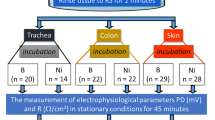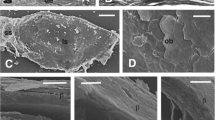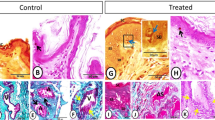Abstract
CERTAIN pharmacological effects of serotonin might be related to its action on the permeability of cell membranes to various ions. It has been shown that serotonin inhibits the pigment effusion, sodium uptake and potassium efflux from slices of red beetroots in vitro 1. The loss of potassium from erythrocytes in cold storage is reduced by serotonin2. An increase of the efflux of sodium and potassium from the isolated skin of a frog was also shown in the presence of serotonin3. This latter effect was not considered to be the result of non-specific damage of the cell membranes, because the permeability to Evans blue or sucrose was not affected by serotonin3. It is, however, well known that serotonin exerts a marked effect on the capillary permeability in rats4–6. Following a different approach, Woolley has proposed that there is an interaction between serotonin and calcium in isolated organs on the basis that serotonin no longer stimulates the uterus in the presence of a calcium-chelating agent7. This finding was interpreted as an effect of serotonin in facilitating the penetration of calcium into the cells8. On the other hand, calcium seems to be an important factor for serotonin release during the antigen–antibody reaction9,10.
This is a preview of subscription content, access via your institution
Access options
Subscribe to this journal
Receive 51 print issues and online access
$199.00 per year
only $3.90 per issue
Buy this article
- Purchase on Springer Link
- Instant access to full article PDF
Prices may be subject to local taxes which are calculated during checkout
Similar content being viewed by others
References
Pickles, V. R., and Sutcliffe, J. F., Biochim. Biophys. Acta, 17, 244 (1955).
Pickles, V. R., J. Physiol., 134, 484 (1956).
Pickles, V. R., J. Physiol., 138, 495 (1957).
Sparrow, E. M., and Wilhelm, D. L., J. Physiol., 137, 51 (1957).
Spector, W. G., and Willoughby, D. A., J. Path. Bact., 74, 57 (1957).
Ungar, G., Kobrin, S., and Sezesny, B. R., Arch. Int. Pharmacodyn., 123, 71 (1959).
Woolley, D. W., Proc. U.S. Nat. Acad. Sci., 44, 197 (1958).
Woolley, D. W., Proc. U.S. Nat. Acad. Sci., 44, 1202 (1958).
Huidobre, H., and Valette, G., C.R. Acad. Sci., Paris, 250, 1375 (1960).
Humphrey, J. H., and Jaques, R., J. Physiol., 128, 9 (1955).
Wilson, T. H., and Wiseman, G., J. Physiol., 123, 116 (1954).
Leonardi, A., Giorn. Ital. Chemioter, 5, 41 (1958).
Cremer, H. D., and Her, W., Radioactive Isotope in Physiologie, Diagnostik und Therapie, 370 (edit. by H. Schwiegk, Springer Verlag, 1953).
Author information
Authors and Affiliations
Rights and permissions
About this article
Cite this article
GARATTINI, S., GROSSI, E., PAOLETTI, P. et al. Effect of Serotonin on Absorption and Distribution of Calcium-45 in the Rat. Nature 191, 185–186 (1961). https://doi.org/10.1038/191185a0
Issue Date:
DOI: https://doi.org/10.1038/191185a0
Comments
By submitting a comment you agree to abide by our Terms and Community Guidelines. If you find something abusive or that does not comply with our terms or guidelines please flag it as inappropriate.



